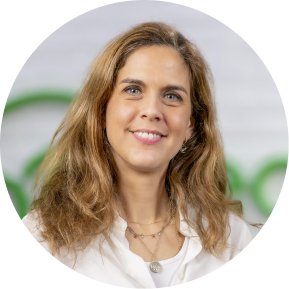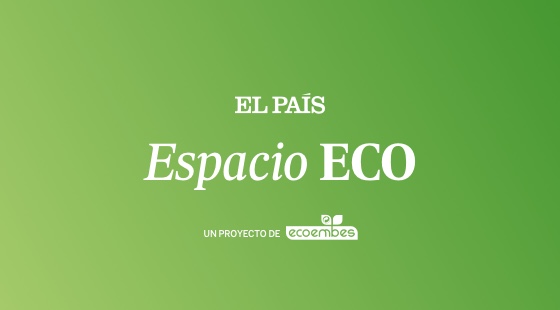Recycling commercial packaging is, from January 1st, the responsibility of those who produce it. This is dictated by the so-called extended producer responsibility (EPR), a rule that emanates from Royal Decree 1055/2022 and which obliges companies that produce this type of packaging to finance its management and account for its recovery. Isabel Tennenbaum, head of the Retail and Manufacturers sector at Ecoembes, clarifies: “In essence, producers who place commercial packaging on the market must guarantee by law that this is incorporated into the circular economy cycle. It is an extra step to guarantee that packaging is raw material and not waste.”
To distinguish what a commercial container is, Tennenbaum gives a simple example: “A milk carton is a household container, which the citizen recycles at home. But milk cartons arrive at the supermarket on a giant pallet that groups together dozens of them. That pallet is a commercial container because it never reaches the consumer.” They would also be commercial containers, to name some of the most common, the white polystyrene boxes that display the goods in the fish shop or the bags that contain loose vegetables. If we have doubts, all we have to do is think about who will recycle the waste from that packaging. If it’s not the citizen, it’s commerce.
Most common types of commercial packaging
Grouping of containers
They are those that group together others and that do not reach the final consumer. For example, a box carrying cans or yogurt to the supermarket. However, if the container can be purchased by the consumer, such as the plastic that holds a six-pack of soda cans, it is not considered a commercial container, but rather a household one.

Packaging from the Horeca channel (hotels, restaurants and bars)
To be considered commercial, these containers must have an exclusive format for the Horeca channel (hospitality, restaurants and cafes). For example, a five-pound bag of sugar that a restaurant purchases from a wholesaler, but which never reaches the restaurant.

Packaging of loose products
A bag of lentils that will be sold in bulk is considered a commercial container. The final consumer receives only the legumes and not the packaging. Another example: the classic white polystyrene box that is used in fishmongers to display and sell the product.

Inter-store packaging
The bag in which a laundry delivers clean towels to a hotel, and which never reaches the guest who will then use them, is commercial packaging.

Product displays
The box in which the fruit is displayed in a greengrocer or supermarket is also considered commercial packaging, and which is sometimes also used to transport it.
The way this waste is managed is similar to that of household packaging. Companies that sell them pay a fee for subsequent waste management.
“Manufacturers who put packaging on the market declare it and pay a price,” explains Tennenbaum. “We, with these funds and in collaboration with local public administrations, are launching a collective system of extended producer responsibility (SCRAP) for the integral management of this waste”.
This system is a sort of all-in-one: in addition to the means to sort waste and recycle it, it also offers regulatory support, eco-design training and consultancy on all processes.
A regulatory change for a gigantic sector
The sectors affected by the regulatory change are different: shops, suppliers, Horeca channel (hotels, restaurants and cafes), department stores, markets… Anged is an organization that brings together 21 large companies that are based in these areas, such as, for example, El Corte Inglés, IKEA or Fnac. They have more than 7,400 factories and 236,000 employees in Spain. Every year, approximately 4.5 million consumers visit its associates’ establishments.
The regulatory change, they explain, had a double effect: “On the one hand, our members, as producers, had to join one of the SCRAPS – the collective systems of extended producer responsibility, such as the one implemented by Ecoembes – of commercial packaging that were established and assume new financing obligations. On the other hand, as distributors, they had to assume a new obligation to inform the SCRAPS of the waste they manage”.
The global recycling model proposed by Ecoembes, explains Tennenbaum, allows companies to comply with regulations “in proportion to the volume of waste and based on its size”. Companies from any sector and point of the national territory can participate in this system.
An effort that is consolidated
This doesn’t mean that these commercial containers haven’t been recycled before. “We’re not starting from scratch. Efficient waste management already existed: for example, department stores and shopping centers separated and recovered waste with private managers. What’s new is the obligation”, specifies Tennnebaum.
Anged confirms this: “Before this regulatory change, our companies had been organizing the management of this waste in their factories for years, which were collected, folded, compacted and delivered to authorized waste managers”.
The new legislation also promotes ecodesign, i.e. the improvement of packaging to reduce its environmental impact through the use of monomaterials; unique containers, without added parts – like the bottle that has the cap attached; lower weights; less ink and maximization of space. Recipes with which, according to Tennenbaum, they definitively leave behind the disposable canon. “It is very important to highlight that sustainability and the circular economy are not an option or an obligation, but rather an asset that can make a difference. And companies already understand this”, he concludes.
That Reducate, that Reuses, that Recycle

Sustainability is not an option or an obligation, but an asset that can make a difference
Isabel Tenenbaum
Coordinator of the retail and producers sector of Ecoembes
It helps companies comply with their legal obligations, prepare regulatory changes or promote eco-design and training
With a degree in Environmental Sciences and a master’s degree in Environmental Management and Control, Isabel Tenenbaum, 45, says she chose her education in a period in which there was practically no talk “about recycling or care for the environment”: “And even less about circular economy, a term that didn’t exist at the time. I chose that career because it was a way to change things”, she underlines.
He has been working at Ecoembes since 2006, mostly in the local and regional management, the part that collaborates with municipalities and autonomous communities, “in signing recycling agreements or installing collection and sorting systems, for example”. Now, for a year and a half, he has been working on customer value development, in particular the coordination of the retail sector and manufacturers: “We help companies comply with their legal obligations, prepare for and anticipate regulatory changes, promote eco-design and training…”, he lists.


